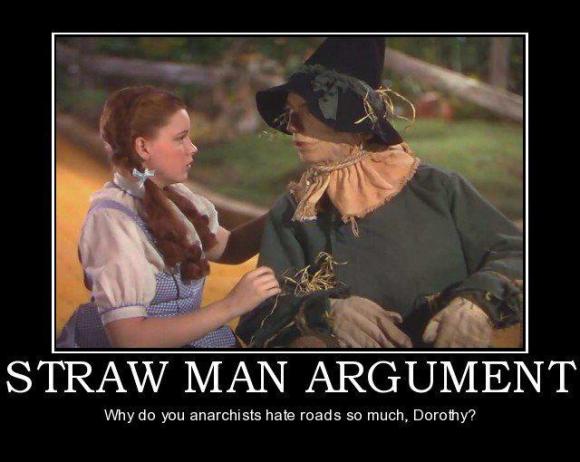 Stuart Chase’s 1956 Guide to Straight Thinking is sometimes credited with the first use of the term “straw man.” He used the term to describe the rhetorical practice of basing a strong argument on the misrepresentation of another position. The straw man/person represents a figure without depth or dynamism that is easily knocked down. And so if one represents feminism in terms of a unified group of man-hating, chainsaw wielding, separatist lesbians, rather than as a wide array of positions held by many different groups with or without chainsaws, then it is relatively easy to persuade a neutral audience that feminism is dangerous. Straw men, or in this case straw womyn, stand in for the complexity of a flesh and blood opponent. The term draws upon the image of the scarecrow on the one hand and on fairground games on the other – the term “Aunt Sally,” for example, is often used as a synonym for Straw Man and comes from the fairground game where a target (often an “ugly” woman or racialized in someway) is set up for others to knock down.
Stuart Chase’s 1956 Guide to Straight Thinking is sometimes credited with the first use of the term “straw man.” He used the term to describe the rhetorical practice of basing a strong argument on the misrepresentation of another position. The straw man/person represents a figure without depth or dynamism that is easily knocked down. And so if one represents feminism in terms of a unified group of man-hating, chainsaw wielding, separatist lesbians, rather than as a wide array of positions held by many different groups with or without chainsaws, then it is relatively easy to persuade a neutral audience that feminism is dangerous. Straw men, or in this case straw womyn, stand in for the complexity of a flesh and blood opponent. The term draws upon the image of the scarecrow on the one hand and on fairground games on the other – the term “Aunt Sally,” for example, is often used as a synonym for Straw Man and comes from the fairground game where a target (often an “ugly” woman or racialized in someway) is set up for others to knock down.
A recent issue of the journal differences engages in the production of straw people and does an Aunt Sally on queer theory. The issue, differences Volume 26 #1 (May 2015), edited by Robyn Wiegman and Elizabeth Wilson, and titled, “Queer Theory Without Antinormativity” asks the question: “What might queer theory do if its allegiance to antinormativity was rendered less secure?” The answer goes something like this: if its allegiance to antinormativity were rendered less secure, queer theory would be…more complicated, more dynamic, and, broader because other important and pressing concerns that have been obscured by this singular focus would come to the fore. What are those concerns? What does this new, shiny, more complicated (queer) theory look like? We never find out. More interested in critique than in outlining new methodologies, archives or theories, this volume is content to say, repeatedly, that oppositionality is not all its cracked up to be; that the humanities orientation of queer theory has concealed the fact that the social sciences are important too; and that queerness as a category has an increasingly elusive relationship to activism, political change and social transformation. None of this is controversial, and it could even be the basis of some interesting new directions in the study of sexuality and gender. But this issue does not lead us there.
What is queer theory without antinormativity, we may ask with the editors of this special issue? Without a critique of normativity, queer theory may well look a lot like straight thinking. And, without these clear alternatives, that is what this volume threatens to become.
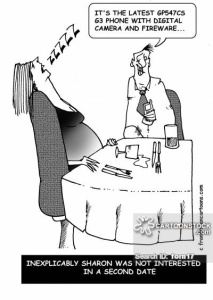
It draws sexy energy from a title that proposes a new kind of queer theory namely, a queer theory without antinormativity but, like a date with a lover who promised hot sex but falls asleep by 9pm, or like an iphone update that claimed it would transform your gadget but actually just ate up all the battery, the issue titillates only by virtue of nestling up to titillation, it thrills only by offering to declaw what is thrilling, it excites by promising to name the fugitive source of an entire genre’s critical excitement. But when push comes to shove, and there is a lot of shoving in this issue despite its seemingly civil tone, queer theory without antinormativity might just be…well, theory, theory about theory.
What’s the basic argument? Queer theory has been characterized by an antinormative stance that has gone unquestioned (until now) and that is the basis for the claims that queer theory lays to a radical political project. This commitment to antinormativity, Wiegman and Wilson say, characterizes the work of all kinds of queer theorists who might otherwise disagree. The problem with antinormativity, as far as Wiegman and Wilson are concerned, is that it derives from a fundamental  misreading of Foucault’s theory or norms; it makes certain positions seem inevitable – a critique of disciplinarity for example; and, antinormativity’s uncontested rightness eliminates the possibility of taking up any other relations to norms or normativity. Furthermore, antinormativity, they propose, has become “canonical” in the field and therefore has acquired, ironically, the status of a norm, proving once and for all that norms are unavoidable and cannot be opposed.
misreading of Foucault’s theory or norms; it makes certain positions seem inevitable – a critique of disciplinarity for example; and, antinormativity’s uncontested rightness eliminates the possibility of taking up any other relations to norms or normativity. Furthermore, antinormativity, they propose, has become “canonical” in the field and therefore has acquired, ironically, the status of a norm, proving once and for all that norms are unavoidable and cannot be opposed.
Let’s take the first point in Wiegman and Wilson’s critique – the idea that antinormativity emerges from a misreading of the norm in Foucault. They write: “Even as it allies itself with Foucault, queer theory has maintained an attachment to the politics of oppositionality (against, against, against) that form the infrastructure of the repressive hypothesis” (12). By contrast, Wiegman and Wilson propose to offer a different methodology for reading the norm and they will do so through a return to the idea of the norm as it is found in Foucault “in order to revivify what is galvanizing (indeed what is queer) about its operations” (12). This is an odd claim at best – first, is it even possible to “revivify” what is not dead but is in fact “galvanizing”? Just asking. But, second, I cannot find this mythic other methodology anywhere in their text. Their anti antinormative methodology seems to amount to the claim that we are all subject to norms. Norms, they remind us, neither restrict nor ostracize, they are neither “controlling” nor are they “tyrannical,” and we are all equally subject to their powers (“we question the political common sense that claims that norms ostracize, or that some of us are more intimate with their operations than others…”). This claim is then followed by a series of quotes from Berlant, Edelman, myself, Sedgwick all clustered under the leaky umbrella of “queer theoretical ambitions” and organized by the common belief that norms are bad.
Few of the theorists mentioned in this essay, if any, have advanced the theory that norms single out certain people or that they target only certain bodies and then tyrannically restrict their capabilities or legitimacy. Instead, the rather impressive group of theorists gathered under this capacious and yet nonsensical heading of antinormative queer theory (Berlant, Butler, Duggan, Edelman, Eng, Ferguson, Halberstam, Halperin, McRuer, Muñoz, Puar, Reddy, Sedgwick, Warner) have all published extremely complex accounts of the relations between nationalism and norms, sexuality and terror, identity and repetition, race and disidentification, sexuality and death, pessimism and optimism, negativity and utopia, recognition and failure. No single theory of norms unites these works either through their embrace of the antinormative or through their understanding of the political. They have no single object, they do not share a goal, they follow multiple methodologies and none of these theorists unambiguously embraces a singular, critical stance from which it unfairly draws energy and through which it proposes to change the world. The antinormative position is, I will say it again, a straw queer, an Aunt Sally, a rag and bone target for any straight thinkers who want to score points in an academic marketplace of diminishing returns.
Like the bad critical theory essay in which everyone is wrong because the author is right, or in which the author notices something that everyone else in the history of critical thinking has ignored, or in which an intrepid and insightful author uncovers a fallacy upon which an entire area of study has depended, this journal issue requires big targets, thinkers united in their false assumptions who can finally be revealed for what they are – naïve, blind, simple folk who see tyranny where there is only discourse, who confirm the status quo through opposition, and who create a new canon while claiming to bring the house down.
What, I ask you, do Wiegman and Wilson want? They tell us they want to “channel the energies of queer inquiry otherwise.” Ok – point us in the direction of “otherwise.” And I really mean that – I want to understand the project here, but it feels elusive. They tell us they will promote scholarship that moves “athwart” rather than “against” (although they are clearly against antinormative queer theory, not athwart it…what is athwart, critically speaking?). And they offer to “rethink the meaning of norms, normalization, and the normal” while imagining “other ways to approach the politics of queer criticism altogether.” Let me translate dear reader: we critics, who read athwart not against, who offer critique without solutions, who know something is wrong but cannot offer to replace it, will keep thinking about this in the hopes of generating something that is not more of the same.
Ok, that sounds harsh so let me break it down:
1. Most of the theorists assembled under the heading of the anti-normative produce the very  scholarship that Wiegman and Wilson call for – namely a critique of simple notions of the political as oppositional . Consider Lauren Berlant’s idea of a relation of “cruel optimism” that “exists when something you desire is actually an obstacle to your flourishing.” Or think of Lee Edelman’s reminder that the impulse to call for a politics around the figure of the child ensures the reproduction of the status quo. Or look again at Rod Ferguson’s Aberrations in Black and his analysis of the way that canonical sociology requires the Black body as a foil for the production of the truth of statistical norms.
scholarship that Wiegman and Wilson call for – namely a critique of simple notions of the political as oppositional . Consider Lauren Berlant’s idea of a relation of “cruel optimism” that “exists when something you desire is actually an obstacle to your flourishing.” Or think of Lee Edelman’s reminder that the impulse to call for a politics around the figure of the child ensures the reproduction of the status quo. Or look again at Rod Ferguson’s Aberrations in Black and his analysis of the way that canonical sociology requires the Black body as a foil for the production of the truth of statistical norms.
2. If you don’t want to commit to some kind of critique of norms you may be doomed to “straight

thinking.” Straight thinking is characterized by a matrix of rhetorical operations that support the common sense of the moment, commit to foreclosing on critiques of the status quo and reinvest in the ordinary, the good and the true. Such rhetorical operations have propped up the very distinctions between straight and gay/lesbian/trans or between abled and disabled or between whiteness and of color that have allowed for legal, social and political benefits to accrue to one group at the expense of the other. Abandon antinormativity and you slip quickly into acquiescence.
3. Antinormative thinking, as represented in this issue, simply means scholarship with an urgent, complex, politically explicit agenda. It is the opposite of the seemingly objective “deviance studies” scholarship that Heather Love writes about in this issue but it is in line with some of the writings by Evelyn Hooker, Mary Macintosh and others that she claims queer studies has rejected. Like other essays in the issue, Love’s piece works around a false claim and a false dichotomy. She claims from the start that there are “ongoing conflicts between humanists and social scientists” within the field of queer studies and that these conflicts turn on “the question of whether the empirical study of sexuality should be understood as social recognition or as epistemological violence” (77). Such conflicts were very common in the 1990’s but disciplinary skirmishes have long since diminished under the pressure of new insights about the arbitrary nature of disciplinary boundaries (Latour). Critiques of the social sciences from within queer studies by Rod Ferguson and others are not disciplinary quarrels so much as they are historically situated accounts of how non-heteronormativity gets located firmly at the heart of U.S. racial formations and links the “multiplication of racialized discourses of sexuality and gender” to the “multiplication of labor under capital” (12). By separating an account of sexual deviance from its imbrication in the production of knowledge on racial deviance in her essay, Love straightens the lines between sexuality and race in a way that literally undoes the work of queer of color critique. What Ferguson had intricately described as meshed, Love unties and analyzes separately.
And later in Love’s essay, she takes aim at the romanticism of The Undercommons to reveal how attached humanities scholars can be to their own subversive potential. What Moten and Harney describe as the role of the “subversive academic” in The Undercommons, Love rejects as a kind of unconscious political violence: “if we are in, we are also of” she writes. Championing the “queer ordinary” and describing the queer academic as a “professional knowledge worker,” Love settles into and accepts her role as observer of ordinary life. Her stakes are clear: the antinormative queer scholar or the fugitive scholar of the undercommons are just engaged in a “romantic disavowal of our position as scholars.” With no account of the activist worlds that informed early queer studies research, no recognition of the disciplinary violence that goes into establishing a definitive split between the “truth seeking” missions of the social sciences and the “civilizing” goal of the humanities in the first place, with no references to the difference that race makes to either professional knowledge production or the definition of deviance, this is an essay that refuses to grapple with its own site of enunciation – for whom is the ordinary smooth and even? For whom is it absolutely unattainable? For whom is it unacceptable?
And so it goes, the straw person argument allows for the wholesale ransacking of several decades of exceptional work from a range of positions and disciplinary locations, emerging from different activist histories and focused upon various political and even utopian horizons. This issue claims to re-evaluate but it comes to eradicate; it claims to survey a field but it creates a position to lambast; it claims to speak for the ordinary but it colludes with the status quo. So, to clarify the argument here: if you still believe in the socially engaged academic and if, like them, your work continues to circle back to performativity, cruel optimism, intersectionality, queer of color critique, queer negativity, critiques of homonormativity, disciplinary critique and the undercommons, this mini-movement is not for you. And for those of you who are still wondering what the answer is to the question posed by this volume of differences in the first place, namely “what is queer studies without antinormativity,” I think I have an answer for you – it is disciplinary, neoliberal, no stakes, straight thinking. You’re welcome!



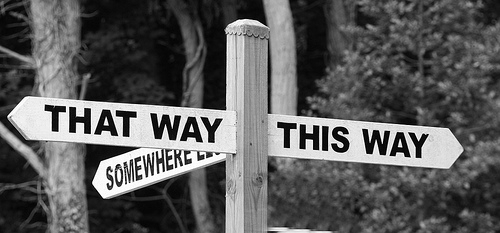
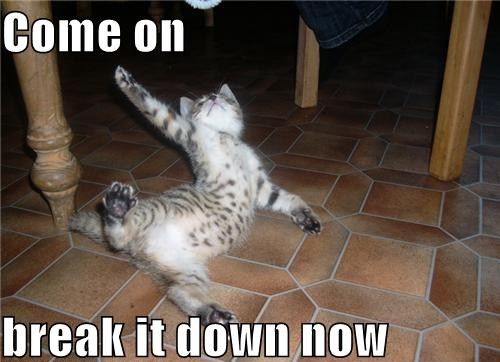
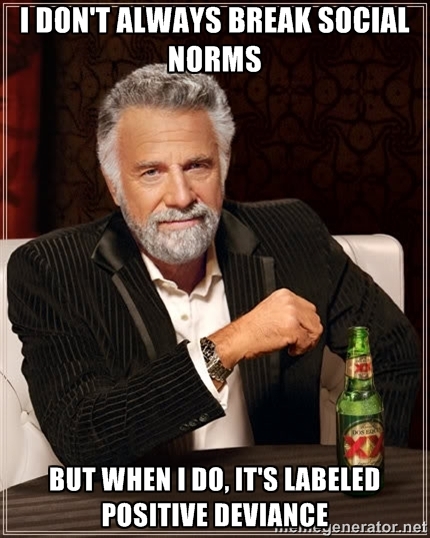
10 replies on “Straight Eye For the Queer Theorist – A Review of “Queer Theory Without Antinormativity” by Jack Halberstam”
unlike the call for “without antinormativity,” i think queer theory needs more precise articulations of antinormativity. for instance, a queer theoretical engagement with digital or bio technologies today must confront the fact that such technologies (take biometrics, for example) rely upon the instantiation of global standards or norms to operate – which can have violent impact upon minoritarian populations (writings by dean spade, simone browne, and shoshana magnet have already illustrated this). however, standards and norms should be more carefully understood here as technical protocols, and once the technical aspects of power today are engaged in queer theory, we might end up with conceptions of queerness as counter-protocological rather than generally antinormative. (this is an argument i’m making in a chapter in my forthcoming book “informatic opacity.”)
Reblogged this on Paulo Jorge Vieira and commented:
a hot debate
Thanks, as always well argued and cogent.
Aha ha, terrific as usual, but this is delightful enough in itself to merit singing in the shower: “…the bad critical theory essay in which everyone is wrong because the author is right, or in which the author notices something that everyone else in the history of critical thinking has ignored, or in which an intrepid and insightful author uncovers a fallacy upon which an entire area of study has depended…” Something to this spot-on litany makes me think of Anna and the King of Siam, “I want what I want when I want it!” the norm is not queers but queers queering the unqueer norm make queery normy norms so are really norms or normqueers. Well, yes and no… Great read, thanks!
[…] have concentrated on the introduction to the special issue. (For more, see Jack Halberstam’s previous Bully Bloggers post.) Only a few of the other essays in the issue actually echo or support the framing offered there. […]
[…] Lectura recomendada: Straight Eye For the Queer Theorist – Jack Halberstam. […]
[…] few years ago, I attended a panel at MLA where I saw White Queer studies fighting hard to guard itself against non-white interlopers. Those of us assembled in the room were told we had misunderstood Queer studies, and were urged to […]
Reblogged this on evilfaggotsite.
I totally don’t like the idea of “Queer Theory without Antinormativity”. Adversely, I think what makes Queer theory so good is that it challenges sexual norm and social norm. The whole theory is built up on antimormativity. I like that queer includes everything, and it can be defined as whatever is at odds with the normal. It is a good concept that makes me feel like part of it. I am not gay or lesbian but when I feel that I might be queer, I feel more connected and would be more supportive to the group.
[…] under suspicion by ostensibly leftist queer thinkers [See also responses on Bully Blogger, here and here. -ed]. So there’s not only a failure of imagination, but the active effort to police political […]